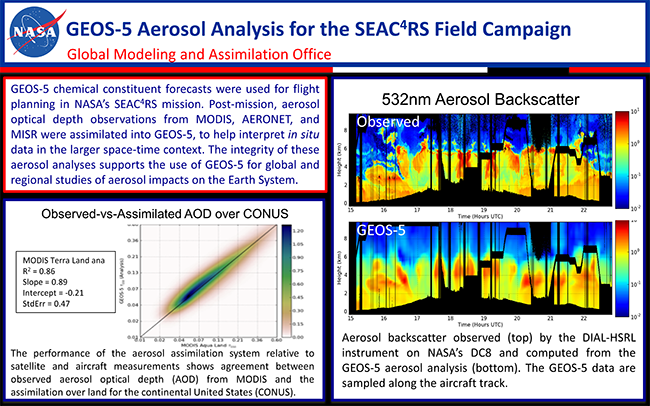GEOS-5 Aerosol Analysis for the SEAC4RS Field Campaign
The NASA Studies of Emissions and Atmospheric Composition, Clouds, and Climate Coupling by Regional Surveys (SEAC4RS) mission took place from August to September, 2013 based out of Ellington Field, Houston, Texas. SEAC4RS had four primary objectives: (1) determine how pollutants are redistributed via deep convection throughout the troposphere, (2) examine the evolution of gases and aerosols in deep convective outflow and implications for upper-troposphere, lower stratosphere (UTLS) chemistry, (3) identify feedbacks of aerosols on climate through changes in atmospheric heating (aerosol semi-direct effect) and microphysical interactions with clouds (aerosol indirect effect), and (4) to serve as a calibration/validation test bed for future satellite instruments and missions.
During the SEAC4RS campaign, the NASA Goddard Earth Observing System version 5 (GEOS-5) operational forecasting system was used for near real time (NRT) meteorological and chemical constituent forecasting and flight planning. For post-mission support and analysis, we have produced a meteorological and aerosol reanalysis for the deployment period using the GEOS-5 meteorological data assimilation system (DAS) and the Goddard Aerosol Assimilation System (GAAS). We thus have 4-dimensional meteorological and aerosol assimilated fields for use by instrument teams. Here we show the performance of the aerosol assimilation system relative to satellite and aircraft measurements. In the top left figure, we show the agreement between observed aerosol optical depth (AOD) from MODIS and the assimilation over land for the continental United States (CONUS). We also show a comparison of 532 nm aerosol backscatter sampled along the aircraft track in the model relative to observations from the DIAL-HSRL instrument aboard the NASA DC-8.


